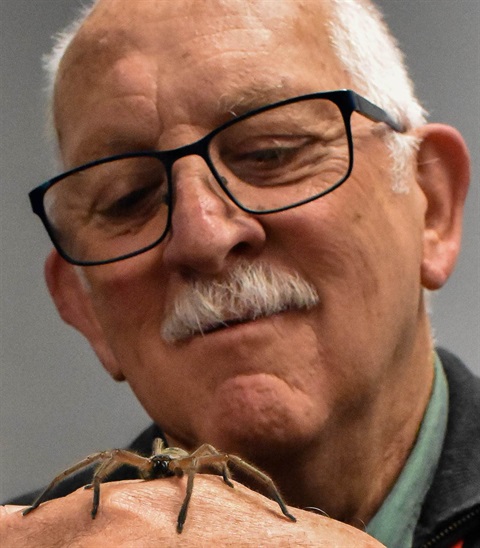New book spins a tale of Tasmania's spiders
Published on 30 July 2019

Did you know the cave spider is the largest arachnid in Tasmania and can grow up to an 18cm legspan? And Tasmania is home to at least three different types of funnel web spiders?
They are just two fascinating facts contained in a new book by Tasmanian spider researcher and author John C. Douglas, which will be launched this weekend at the Queen Victoria Museum and Art Gallery.
SPIDERS OF TASMANIA is the second book on Tasmanian spiders by the retired teacher, who now works part-time at the Museum, focussing specifically on the Tasmanian arachnid collection.
John's fascination with our eight-legged friends began almost two decades ago.
The former design draftsman and school teacher of 32 years had long held a love of spiders dating back to his childhood.
But that interest took a more serious path around 2002 when he purchased his first digital camera and began photographing spiders found in his garden.
"I've always been interested in all types of creatures going back to my childhood," John said.
"We lived in the desert and I spent a lot of time looking for various creatures that lived around me and identifying them.
"When I eventually retired, people began saying to me: 'Why don't you write a spider book'."
John's first tilt at publishing resulted in the release of his first spider book 'Webs: a guide to Tasmanian Spiders', which was released in 2014.
That publication contained a collection of about 140 spider species found in Tasmania, but thanks to his ongoing research, John's latest offering contains no less than 260 different spiders.
That said, John believes there are still many, many more spider species to be found.
"That figure will never be definitive. We're always discovering new spiders and there are simply so many we couldn't include every single Tasmanian species out there," he said.
So what is John’s favourite spider family (or group) in the book?
"That would be the jumping spiders. They have a lot of character and are really interesting to photograph," he said.
“They are usually very small - the largest we have in our collection is about 13mm long, but generally they're no more than 4 to 5mm in size."